The Austin Hotel was fabulously located in Nizami Street Mall central Baku, surrounded by numerous open cafes, restaurants and parklands - and within walking distance to attractions such as the Old City, Maiden Tower and the seashore boulevards of the Caspian Sea. It was also close to theatres, banks and posh high end shops such as Armani, Benetton, Mango, Gandezza, Mado etc.
Our room was comfortable with great views of the lovely architecture of the old European buildings of the Nizami Mall. As mentioned in my review of the hotel however, the main limitation - and it was significant - was that there were no lifts and being on the top floor, carrying our luggage up and down the steep narrow stairwell was really quite onerous. A generous natured young man from the reception insisted on helping us but it was an awful effort, even though we were pretty fit and were travelling very light.
There was no restaurant at the hotel but this was not really a problem as there were so many nearby cafes and restaurants. Breakfast was served in an austere dark room with minimalist brown furniture - this design is all the go these days we know, but there was not much ambiance and it certainly didn't do much for us. The breakfast buffet was very limited but, in saying that, it was adequate. It was probably a good thing anyway. We had been eating some wonderful buffet breakfasts throughout our journey and although we either skipped lunch or ate very, very lightly during the day, I was annoyed to notice that I was gaining weight. Our travelogue friend Asif amused me in one of his blogs by saying that on that particular trip, he had eaten so often at Burger King, he was starting to look like one. Well, I was sure starting to look like an egg....
Suleyman was in great form. Unlike us, he appeared to be quite enthused about our media interviews. Bright and chirpy, and dressed in a crisp vivid blue shirt, neatly ironed brown trousers and super polished shoes, he arrived early to pick us up at our hotel for our morning tour of the Old City. We could well understand that it could be a very useful opportunity for him to impress his company.
It was different for us. We had no idea of the purpose of the interviews (the explanations from Suleyman understandably got a bit hazy in translation) and although we guessed it was most probably for a tourism promotion, perhaps in the lead up to the Baku 2015 1st European Games, we were cautious. We were also mindful that we had only been in the country for less than two days and were really in no position to make any informed comments.
Alan and I have had a fair bit of experience with the media, both in our former careers and also more lately being community activists for our home village of Crowdy Head. Whenever we have been interviewed while we are travelling, we have been acutely mindful of being sufficiently politically astute and mentally agile to avoid a perception of being critical of a government, especially on live television - and especially in volatile countries such as the Caucasus. Oh well, we consoled ourselves, it would just be a short interview at the Old City and then we would be free for the day. Well....
The city of Baku had a good feel. The capital city of Azerbaijan, as well as the largest city of the Caspian Sea, Baku is by far the most cosmopolitan city of the Caucasus region. Located at 28 meters below sea level on the southern shore of the curiously shaped Absheron Peninsular, the city is the country's cultural, scientific, educational and industrial centre and is home to more than two million people.
On a bright warm sunny day, our walk down to the Old City was very pleasant. We were amazed at the beauty of the city; its architecture a mind boggling contrast of old and new, traditional and futuristic, Oriental, Soviet and European. If you were dropped into the city without knowing what country you were in, you would have a hard time trying to work out whether you were in Central Asia or Europe. Baku, like an ex-patriot living abroad for many years, curiously belongs to neither - nor both.
The city streets of central Baku were spotless and the parks lush and well kept, all lined with the lovely old Chinar trees which are so popular throughout this part of the world. Even the grand old European styled buildings looked fresh and clean. To our surprise Suleyman told us they had recently all been steam cleaned, on the orders of President Ilham Aliyev. The cost must have been astronomical. It helps to have oil money....
It wasn't always like this. Following the discovery of oil around Baku in the mid 1800's, large scale oil extraction attracted private overseas investors from Switzerland, Britain, France, Belgium, Germany, Sweden and America, including better known oil barons such as the Nobel brothers (of Nobel Prize fame), the von Bortzell-Szuchs and the Rothschild families who built enormous mansions around the Old City - and hence the very obvious European architectural influence all around the city. By the beginning of the 20th century, almost half of the world's oil production was extracted from the area surrounding Baku. The oil boom boosted the economy of Azerbaijan and contributed to massive growth of the city of Baku - but on the down side, the oil workers lived and worked in appalling conditions and Baku soon became a hot bed of bloody unrest and one of the most horribly polluted cities in the world. Thankfully, now only remnants of its former pollution can be seen in the scars of deserted oil rigs just out of the city.
THE OLD CITY AND INTERVIEW WITH LIDER NATIONAL TELEVISION
For such reluctant interviewees, we could not help but be impressed by Vugar, our charming young presenter from Lider Television and his two obliging camermen. A handsome and gregarious young man perhaps in his early thirties, Vugar was certainly not into asking difficult or political questions. But in fact, it was not at all easy - only because we had been in the country for such little time.
"What do you think of Azerbaijan? What do you think of Baku? What is your favourite Azerbaijani food? What is your favourite place you have visited?". And so it went on with us stumbling over our answers while trying to be as positive as we possibly could. After all, the little we had seen of Azerbaijan had been most impressive. It didn't help however that we had only sampled one restaurant in Baku and - oops - that had been Turkish. I didn't even want to think about my popular-in-the-1970's Russian Chicken Kiev the night before...
One topic we could talk about is how little known Azerbaijan is for Australians. And even despite all the pre-reading we had undertaken, it was still an unknown land for us. Furthermore, I think that in all my years, I have only met one Azerbaijani person in Australia, a taxi driver who chatted dreamily about his beloved Baku. Anyway, Vugar seemed to be happy with our answers and especially so, with our compliments about what we had seen briefly of the beautiful city of Baku and the seemingly well kept secret of Azerbaijan.
Heaving a sigh of relief that our interview was over, we began to say our thanks and farewells. Vugar however, brightly replied "Oh, we will see you after your tour of the Old City". We looked at each other, knowing it meant we had to be especially diligent students and try to remember all we could about the tour and history of the Old City and Shirvanshah Palace.
Like the other countries of the Caucasus, the history of Azerbaijan over the centuries has been extraordinarily turbulent with waves of Persian, Arab, Turkish and Russian conquerors enforcing new religions, languages, ethnicities and borders. Even today - and like Armenia and Georgia - its existence and controversial borders remain a constant reminder of the volatility of the warsome Caucasus region.
Although the first historical reference to Baku dates back from AD 885, there is evidence that the area was settled several centuries before. By the 11th century AD, Baku was under the control of the Shirvanshas who made the city their capital. In 1723, Russian Peter the Great captured the city but it was returned to Persia in 1735. The city was captured again by Russia in 1806, and after the Soviet victory in 1922 it was declared the capital of the Transcaucasian Soviet Federated Socialist Republic. Finally, in 1991 following independence, Baku became the capital of the Republic of Azerbaijan.
The UNESCO World Heritage Old City of Baku (otherwise known as the Icheri Sheher or Inner City) is the historic heart of Baku and a great tourist attraction. The Icheri Sheher was once the main gate to Baku and for more than one thousand years, was a lively thoroughfare for streams of peasant driven bull-carts, cavalcades of horsemen, camels, caravans and pilgrims who poured across the moat and through the city arch with its massive iron-clad double gates.
Today, the city walls still standing are the inner walls of a double fortified fortress which once comprised an outer wall some 12 meters away. The structure was very effective in guarding the city - if the enemy managed to scalp the first wall, they ended up in a stone trap where they would be fired upon by archers from all sides.
Enclosed within sturdy tall limestone fortress walls, there is now an open-air museum containing some 44 monuments of medieval architecture, including the unique Palace of the Shirvanshahs and the strange Maiden Tower, the symbol of the city of Baku. Not surprisingly, the city's architecture reveals elements of Zoroastrian, Sassanian, Arabic, Persian, Shirvani, Ottoman and Russian, reminders of its long and turbulent history of successive invasions and cultural influences.
Our wanders through the dim, narrow back lanes were certainly a walk back in time after the essentially modern central Baku. The Old City environs comprising a maze of stone cobbled passageways, old houses with protruding wooden verandahs, caravanserais turned into restaurants and numerous cafes were solitary, almost moody with virtually no local people, let alone tourists. It so quiet that it was difficult to believe that the city was still a living residential area. We continued to wonder why there were so few tourists in any of the countries we visited in the Caucasus.
Shirvanshah Palace - "Pearl of Baku's Old City"
Our first visit in the Old City was to the Shirvanshah Palace located at the highest point of the Icheri Sheher. The palace ensemble was once the residence of the Muslim Shahs of ancient Shirvan, the largest feudal state in the north-eastern part of Azerbaijan from mid 9th century to the early 16th century.
The Divanhane Palace, dates back to the 11th century. In addition to the main palace building, the complex includes the family tomb of the Shirvanshahs and burial vaults, the Shah's Mosque and minaret, the Divankhna (a small stone pavillion), the 15th century scientist and philosopher Seyid Yahya Bakuvi's mausoleum and the remains of the extensive palace bath houses. A museum since 1964, the palace also includes remnants of the Bayil (Sebayil) Fortress which is now submerged under the Caspian Sea.
Suleyman, being a model guide gave us a very thorough explanation of the history of the Shirvanshahs and of the palace. We were desperately tired from all our travels and all I can recall thinking was how on earth we were going to remember at least some of the information so we could sound even just slightly informed during our next round of interviews with Lider. After all, Vugar had enthusiastically explained the interviews would be broadcast internationally across some 120 countries.
The palace museum was well structured and the displays clearly documented in both English and Azeri. I was particuarly impressed with the display of the moustache protector which was for keeping vain gentlemen's moustaches in place whilst they slept! Since 2003, the palace and its surrounding buildings have been beautifully restored and the stately complex, although entirely unfurnished, still possessed a certain quiet, calm atmosphere. They were indeed silent witnesses and so typical of buildings who have seen so much history under their walls.
Our one hour tour was very pleasant. In addition to the variety of structured exhibits, it was interesting to explore the palace buildings with the lovely architecture of the mosque and its minaret, the palace gardens and the fascinating bath houses. But most startlingly, above the Old City buildings rose the amazingly futuristic - and completely incongruous - modern skyline of the new Baku. As I looked at the massive 190 meters Flame Towers skyscrapers soaring above the Icheri Sheher, I wondered what the Shahs of ancient Shirvan would have thought.
Fascinating Story of the Bayil Castle
One of the more interesting displays of the Shirvanshah Museum was the story of the now submerged Bayil Castle, also known as the Atlantis of the Caspian Sea.
The castle was built on one of the Bayil Hills near Baku during 1232 - 1233 during the reign of the Shirvanshah Garsasb. During a major earthquake in 1306, the building collapsed and the island submerged under the Caspian Sea, remaining under water for several centuries.
Fluctuations in Caspian Sea levels have been well documented throughout history and it is thought that this huge expanse of sea is a remnant of the ancient Tethys Ocean which once connected the Atlantic and Pacific Oceans - and hence its high salinity. In the 18th century, when the Caspian Sea levels receded, the structure resurfaced and inscripted stones were recovered from the site.
The first formal excavations of the Bayil Castle took place between 1938 and 1940, when Azerbaijan was part of the Soviet Union. The castle was found to be a major defence complex measuring 40 meters by 180 meters, comprising 15 semi-circular castles connected by a wall some 1.5 meters thick. In 2008, an ancient underpass was discovered in the Icheri Sheher which is thought to have led to the Bayil Castle. Further tunnels have since been found in the Shiravanshah Palace, all thought to have once led to the castle. Today, stones carved with Arabic inscriptions, animal figures and human faces are kept in the Shirvanshah Museum.
Just outside the Shirvanshah Palace we came across an extraordinary sculpture, the bronze bust of Aliaga Vahid who is regarded in Azerbaijan as a “master of satiric poetry”. Sculpted in 1990 by Rahib Hasanov, the approximately 10-foot-tall bronze bust stands in a small garden area of the Icheri Sheher. Most bizarrely, embedded in the hair of this strange sculpture are numerous allegorical figures. Aliaga Vahid began writing and publishing poems in his late teens and later, he translated Persian literary works into the Azerbaijani language. Today, Suleyman told us, he is a most revered figure in Azerbaijani literature.
AROUND ICHERI SHEHER
Baku Miniature Book Museum
Vugar and his camera crew were smiling as we endured another set of television interviews about the Shirvanshah Palace. I think they appreciated what it was like to be on camera after an hour in a museum and thankfully our kind Vugar was merciful with his questions. I cannot remember how many interviews we had that morning but by the end of them, we were exhausted. I must say however that we really enjoyed the company of these young men who chatted happily with us as we walked through the streets of the Old City. Quite frankly, it was more interesting for us to talk with them about being a young person in Azerbaijan than visit any more museums. They were great examples of the modern young people of Azerbaijan, all wearing designer jeans and shirts and sporting the latest high flat top hair styles and the very fashionable "more than a five o'clock shadow" semi beard growth. They were refreshingly enthusiastic and good fun to be with. The photographs of our interviews below are courtesy of Vugar and Lider Television.
We were not saved from more museums however; our next visit being to the Baku Museum of Miniature Books. The museum looked more like a shop with carefully itemised displays of Zarifa Salahova's collection of some 6,500 miniature books which she has painstakenly collected over 30 years and now shares with the public as a museum "to encourage a love of books and literacy in young people". Some of the books are extremely rare, one being a 17th century copy of the Quran and three of the smallest books in the world, one Japanese copy measuring a tiny 2mm X 2mm.
A very engaging Zarifa met us at her museum, accompanying us though her beloved collections. She explained that the museum was divided into 15 sections with some 25 exhibition cases, comprising works ranging from revered Azerbaijani poets to literary giants such as Pushkin, Shakespeare, Edgar Allan Poe and Hemingway. A Soviet section was devoted to Communist Movement leaders such as Marx, Engels, Lenin, Breshnev etc. Another book was dedicated to the late Princess Diana. There was, Zarifa explained enthusiastically, even a miniature book from Australia.
We tried hard to look interested and nodded intently at the collections, especially as Vugar's cameras were fixed on us for most of our time there. To be perfectly honest however, we found it hard to find the museum interesting. Alan looked puzzled "Why would you want to collect impossibly tiny books when many of them were unable to be read without at least a magnifying glass, if not in some instances a frigg'n microscope?" he muttered (very) quietly. Half and hour seemed like a long time and we were pleased when our tour was over - even though we were subject to yet another interview. Thankfully, we were not asked about the collection. The museum rates highly on TripAdvisor but it certainly was not on our "must see" agenda.
Maiden Tower - The Legend of a Young Woman's Suicide
Our wanders through Icheri Sheher took us through cobble stoned narrow alleys past market places selling handwoven rugs, silk scarves and other tourist wares, open cafes and old caravanserais now converted into restaurants. We resisted the rugs but I did buy some lovely silk scarves as gifts. The architecture of the old houses was rather charming with two to three storeyed buildings adorned by old timber verandahs and curved Islamic styled doorways.
Just past the caravanserais, we came across the famous Maiden Tower (Gyz Galassy), a historical symbol of Baku and a treasured icon found today on the Azerbaijani currency the New Manat. There is much conjecture as to the time of construction and the fictitious meaning of the tower's rather intriguing name. It is thought that the foundations of the tower, which extend some 15 meters below ground level, were built as far back as the 4th and 6th centuries and the top part added later in the 12th century as part of the walled city. At that time, the imposing structure was lapped by the the waters of the Caspian Sea and it is assumed that the tower was used as a defence tower or watch tower for the city.
The structure is imposing, with a 29 meter tower with an unusual protruding buttress at its base which in parts is up to 5 meters thick. It certainly was an incredibly massive structure for its day. Comprising eight floors, its lower floor which was a retractable ladder has now been replaced by a modern iron stairway. Maiden Tower reminded us of the eerie watch towers we saw in Georgia which were used as refuge from the enemy. Perhaps it was used also as an emergency sanctuary for the city's elite?
There are many stories of how the tower was named. As one of the legends goes, a wealthy ruler fell in love with his daughter and demanded that she marry him. The young woman, horrified at the thought of incest but unable to refuse her father, demands that he build her a tower high enough for her to survey the full extent of his city before she made her decision. When the final part of the tower was completed, she climbed to the top and threw herself to her death.
It is thought that more likely explanations revolve around the tower being known as a "Virgin Tower", hence its impenetrability rather than its association with tragic young women. Whatever the story, it all sounded very male inspired to me....
We were pleased to stop and have lunch at one of the caravanserai restaurants. The interior of the building was beautiful, with crisp starched clothed tables formally laid out for banquet style seating. Vugar and his team who must have been fatigued from digging up any more questions for our interviews, farewelled us, promising to keep in contact on Face Book - which he did that night. And we are still in close contact, as are all our guides, drivers and contacts we made during our travels. The YouTube Reference to our interviews with Lider Television is: https://youtu.be/AUgdOUgDyug
Cats of Incheri Sheher
Our relaxed walk through the Incheri Sheher back to our car was very pleasant. Although there were still not many people around, there were heaps of friendly cats, all looking well cared for and typically self possessed. And being Cat Tragics, we could not help but stop and talk to them. Suleyman looked surprised but he patiently waited for us while we patted and stroked these unusually outgoing and affectionate animals, wondering how our own cats at home were faring with their temporary adoptive parents Deb and Ian.
AFTERNOON TOUR OF THE ABSHERON PENINSULAR
Around the Absheron Peninsular
Our last formal visit in Baku, and in fact for our whole trip away was to the Atashgah Temple followed by an afternoon driving tour out of the city and the surrounding Absheron Peninsular.
The Absheron Peninsular is a beak shaped stretch of land extending 60 kilometers into the Caspian Sea and measuring 30 kilometers at its widest point. It has a semi-arid climate and is the driest part of Azerbaijan, having a miniscule annual rainfall of less than 200 mm. The peninsular is home to dry steppe and semi-desert vegetation, with any agriculture requiring intensive irrigation.
The site of some of Azerbaijan's (and indeed the world's) oldest petroleum production, the Absheron Peninsular as mentioned was one of the worst oil polluted regions in the world, with foul air and land contamination causing serious environmental damage. Outside the ritzy city of Baku with its amazing skyscrapers and glass futuristic buildings, its landscape today is still a strange combination of wastelands of salt sodden lands, oily pools of effluent and rusting oil derricks.
On the other hand - and quite amazingly - some of its Caspian Sea coastline and beaches look temptingly clean. With clear aqua coloured waters, expensive resorts and substantial wealthy houses, it is known rather perversely as "the seaside playground of Baku's playboy elite".
And similarly, despite the low sea level location and oil and pesticide polluted saline soils, there is still a thriving horticultural industry, with major produce being flowers, together with orchards of figs and mulberries.
The Absheron Peninsular is home to several historic castles, a number of mosques and the famous Atashgah Fire Temple.
The Atashgah (Ateshgah) Fire Temple
The afternoon was hotting up and the Atashgah Fire Temple shimmered in the blistering heat. Again, there was not another soul, let alone even a single tourist to be seen. We began to wonder if there were any other tourists in Azerbaijan... Perhaps they were just wise in not coming out into the scorching midday sun.
The Atashgah Temple is a castle-like religious temple located in the Baku suburb of Surakhani, and was once used as a Zoroastrian and (most probably) a Hindu place of worship. The pentagonal complex houses a courtyard houses a central altar and is surrounded by cells for monks.
The actual temple as it is today, was built in the 17th and 18th centuries but was abandoned when oil and gas plants were established in the area, preventing the flow of natural gas to the temple site - and in turn extinguishing the "eternal flame" of the altar.
It is thought that the oil rich land surrounding the temple was once a burning site for the natural oil that oozed up through the soil and was highly sacred to ancient fire worshipers. Later it became a place of pilgrimage and a philosophical centre for Zoroastrians of the north-western sub-continent who traded along the famous Great Trunk Road as far back as the 2nd century BC. In some regard its structure was highly reminiscent of a caravanserai and given its importance along the old trade routes, it most probably was.
The great adventurer and traveller Marco Polo described the oil filled site some 800 years ago:
“Near the Georgian border there is a spring from which gushes a stream of oil, in such abundance that a hundred ships may load there at once. This oil is not good to eat; but it is good for burning and as a salve for men and camels affected with itch or scab. Men come from a long distance to fetch this oil, and in all the neighbourhood no other oil is burnt but this.” (From The Travels of Marco Polo)
Futuristic Buildings of the Modern Absheron Peninsular
The remainder of our afternoon tour comprised a driven tour of the peninsular with its holiday resorts and seaside boulevards along the Caspian Sea and the mind boggling array of magnificent glass skyscraper towers. Love them or hate them, it was impossible for us not to be stunned by the creativity of the architects in constructing such outrageously bold and beautiful buildings. They were literally giant works of art. Below is a photo display of some of the most radically designed buildings we have ever witnessed.
For me, the most impressive of the buildings was the 190 meter tall Flame Towers, inspired by the fire flames of Azerbaijan - also known as the "Land of Fire". At a massive cost of US $350 million, the three towered complex includes a Fairmont Hotel, offices and apartments - and can be seen from nearly every part of Baku, including of course the Incheri Sheher.
Another famous modern building that unfortunately we did not see was the now world famous, 25,000 seated Baku Crystal Hall which hosted its first major event, the Eurovision Song Contest in 2012.
Our tour of Absheron Peninsular was fascinating; the evolution from the putrid polluted oil infested ponds and old rotting rusting oil rigs to a mega futuristic and magnificent cityscape was mind boggling. And in a strange way, we found ourselves highly privileged to witness the phenomenal transition.
We also wondered about the much publicised Azerbaijan financially backed Kars-Tbilisi-Baku Railway, otherwise known as the "Iron Silk Road" which would connect Kars in Turkey via a corridor to Tblisi, Georgia and on through Azerbaijan to Baku (bypassing its dire foe of Armenia). In the long term, the line was intended on an annual basis to transport 3 million passengers and some 17 million tons of freight, including oil.
After all, the so called Iron Silk Road was part of our inspiration to explore Azerbaijan and other parts of the Caucasus. As mentioned in the introduction to this travelogue, we had been captivated by the August 2010 edition of National Geographic article "The New Silk Road - a Railroad Through Southern Caucasus Will Soon Connect Europe and Asia, Fueling Dreams and Discord in the Region: The Iron Silk Road..... will make the southern Caucasus a great corridor for east-west trade. Financed largely by Azerbaijan, whose oil dominates the area's economy, the railroad breaks a long dependence on transporting goods through Russia - and reflects the region's hostility toward Armenia, which it pointedly bypasses".
Suleyman was non-committal about the progress of the rail link up. It appears however that political events, including the Nagorno Karabach war have contributed to successive delays in the completion of the ambitious project. Latest information indicates that it is now due for completion in the year 2017.
Our drive back to our hotel followed the Caspian Sea coastline but unfortunately we did not have the opportunity to wander the boulevards along its seaside shores. We were driving in heavy peak hour traffic and anyway it would have been impossible to park our car. We did however see glimpses of the coastline with its huge Ferris wheels and seaside stalls from a distance. But anyway, we were tired after our 24 days solid travel and had a very early start the following day with our 6.00 am Aeroflot flight to Moscow where we would connect with China Eastern Airlines for our flight to Shanghai.
Like all cities, parking is a real problem in central Baku and Suleyman dropped us off a few blocks from our hotel, promising he would pick us up for our early start at 3.30 am. On a warm and balmy afternoon, it was a very pleasant stroll through the upmarket malls to our hotel. A familiar voice called out "Sir, madam! Will you be dining with us again tonight?". It was of course our friend, the owner of Sultan's Restaurant. We knew that we should be trying some Azerbaijani food but the offer was too tempting.
Our friend was a great host for us that evening, ensuring we had the very best seats and making suggestions about his house specialties. We settled for mezze to begin with, which included the most fantastic hummus, fresh yoghurts, olives, small salads and just baked puffed up breads. The humus was smooth and oozing with beautifully fragrant fresh olive oil. I have tried to recreate the recipe as I remember it - see below. Our main courses were mixed spiced chicken and beef kebabs, all washed down with some very nice Azerbaijani wine.
It was a perfect finale to our visit to Azerbaijan, a country that we surprisingly fell in love with. Well at the time at least, we did think it was our finale dinner......
MY RECIPE FOR SULTAN'S HUMMUS
One 400 gm can of good quality chick peas (I always use Annalisa brand)
One 400 gm can of good quality white beans (again Annalisa brand)
Three cloves of fresh garlic, grated
Freshly roasted and hand ground cumin (don't ask me why hand ground, home roasted seeds make a better flavour but they do)
Best quality cold pressed extra virgin olive oil (I use a very generous amount of Greek Kalamata)
Half a lemon squeezed
Salt to taste (or Masssel brand vegetable style stock powder)
Dukkah (I make my own)
Blend with a stick processor the combined beans and peas, using some of the can juices to make a soft paste. Add garlic, oil, lemon, salt and cumin. Correct seasoning and moisture if required. Leave for at least four hours for the flavours to infuse.
Serve on a flat rustic platter, topped with a drizzle of more olive oil and a good sprinkle of dukkah. I serve it with broken flat bread dried at 90 degrees C for an hour, then left to cool in the oven.
Note: You could add Tahini but I prefer the simple flavours of the chickpeas, beans and good olive oil.
Baku - One of the Beautiful Cities of the World
Saturday, May 30, 2015
 Baku, Azerbaijan
Baku, Azerbaijan
Other Entries
-
14Armenia: Proud People of a Lost Land
May 1713 days prior Yerevan, Armeniaphoto_camera25videocam 0comment 0
Yerevan, Armeniaphoto_camera25videocam 0comment 0 -
15Under the Gaze of Noah
May 1812 days prior Yerevan, Armeniaphoto_camera36videocam 0comment 2
Yerevan, Armeniaphoto_camera36videocam 0comment 2 -
16Lake Sevan - The Tranquility and The Terror
May 1911 days prior Gyumri, Armeniaphoto_camera36videocam 0comment 0
Gyumri, Armeniaphoto_camera36videocam 0comment 0 -
17Gyumri: God Will Heal Your Wounded Soil
May 2010 days prior Bavra, Armeniaphoto_camera18videocam 0comment 0
Bavra, Armeniaphoto_camera18videocam 0comment 0 -
18Keti, Vano & Welcome to Georgian Hospitality....
May 2010 days prior Akhaltsikhe, Georgiaphoto_camera19videocam 0comment 0
Akhaltsikhe, Georgiaphoto_camera19videocam 0comment 0 -
19To Borjomi - Playground of the Tsars
May 219 days prior Batumi, Georgiaphoto_camera25videocam 0comment 1
Batumi, Georgiaphoto_camera25videocam 0comment 1 -
20Batumi to Zugdidi - Mestia: Guests of the Dadianis
May 228 days prior Mestia, Georgiaphoto_camera27videocam 0comment 3
Mestia, Georgiaphoto_camera27videocam 0comment 3 -
21Silent Witnesses of a Strange Place
May 228 days prior Ushguli, Georgiaphoto_camera46videocam 0comment 0
Ushguli, Georgiaphoto_camera46videocam 0comment 0 -
22Kutaisi: "This is My Abode Forever and Ever..."
May 246 days prior Kutaisi, Georgiaphoto_camera26videocam 0comment 0
Kutaisi, Georgiaphoto_camera26videocam 0comment 0 -
23To Gori: Birth Place of Joseph Stalin
May 255 days prior Gori, Georgiaphoto_camera25videocam 0comment 0
Gori, Georgiaphoto_camera25videocam 0comment 0 -
24Gori to Tbilisi: Travelling Through Troubled Lands
May 255 days prior Tblisi, Georgiaphoto_camera27videocam 0comment 0
Tblisi, Georgiaphoto_camera27videocam 0comment 0 -
25In the Presense of St Nino & Vano's Perfect Picnic
May 264 days prior Tbilisi, Georgiaphoto_camera19videocam 0comment 0
Tbilisi, Georgiaphoto_camera19videocam 0comment 0 -
26In Fields of Gold: Davit Gareja Monastery Complex
May 273 days prior Davit Gareja, Georgiaphoto_camera21videocam 0comment 0
Davit Gareja, Georgiaphoto_camera21videocam 0comment 0 -
27Bodbe Monastry: Resting Place of St Nino
May 282 days prior Sighnaghi, Georgiaphoto_camera18videocam 0comment 0
Sighnaghi, Georgiaphoto_camera18videocam 0comment 0 -
28From Georgia Into Azerbaijan - "Good Luck"!
May 282 days prior Sheki, Azerbaijanphoto_camera26videocam 0comment 0
Sheki, Azerbaijanphoto_camera26videocam 0comment 0 -
29Azerbaijan - A Very Well Kept Secret....
May 282 days prior Sheki, Azerbaijanphoto_camera24videocam 0comment 4
Sheki, Azerbaijanphoto_camera24videocam 0comment 4 -
30Along the Dagestan Border to Ancient Lahij Village
May 291 day prior Lahıj, Azerbaijanphoto_camera49videocam 0comment 0
Lahıj, Azerbaijanphoto_camera49videocam 0comment 0 -
31Baku - One of the Beautiful Cities of the World
May 30 Baku, Azerbaijanphoto_camera60videocam 0comment 0
Baku, Azerbaijanphoto_camera60videocam 0comment 0 -
32Flight Chaos OR a Saviour Called Mikhail
May 30later that day Baku, Azerbaijanphoto_camera7videocam 0comment 1
Baku, Azerbaijanphoto_camera7videocam 0comment 1 -
33Three Russian Miners AND The Bride of Frankenstein
May 311 day later Shanghai, Chinaphoto_camera6videocam 0comment 0
Shanghai, Chinaphoto_camera6videocam 0comment 0 -
34Shanghai OR How To Stuff a Dooner Into a Suit Case
May 311 day later Shanghai, Chinaphoto_camera5videocam 0comment 0
Shanghai, Chinaphoto_camera5videocam 0comment 0 -
35"Madam, This Queue is for Business Class Only...."
Jun 012 days later Shanghai, Chinaphoto_camera7videocam 0comment 0
Shanghai, Chinaphoto_camera7videocam 0comment 0 -
36Reflections & Those Who Made Our Trip So Speci
Jun 034 days later Sydney, Australiaphoto_camera12videocam 0comment 0
Sydney, Australiaphoto_camera12videocam 0comment 0

 Baku, Azerbaijan
Baku, Azerbaijan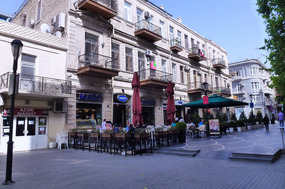
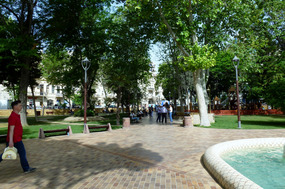
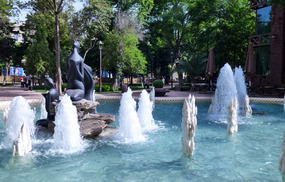
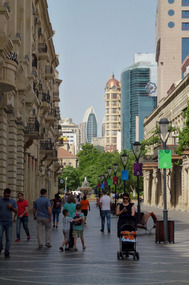
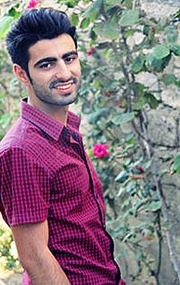
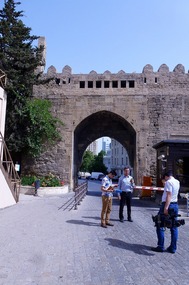
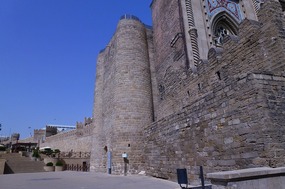
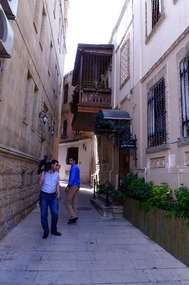
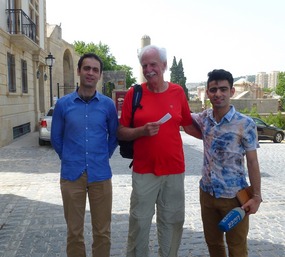
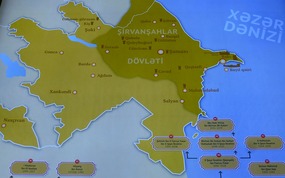
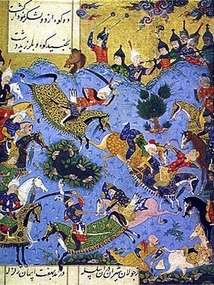
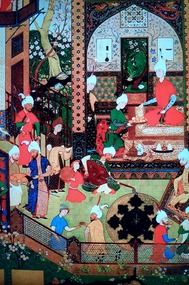
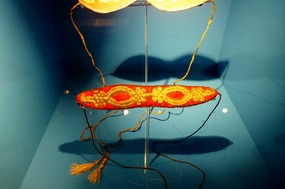
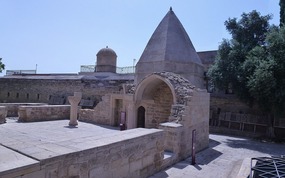
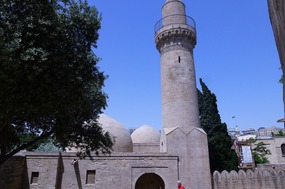
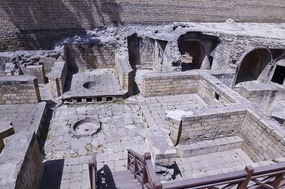
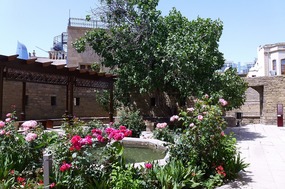
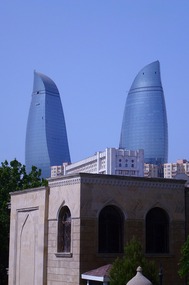

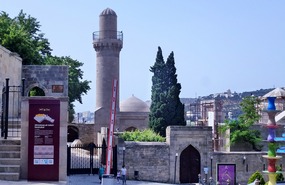
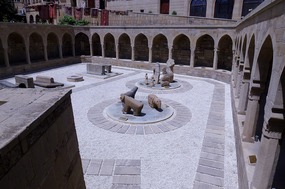
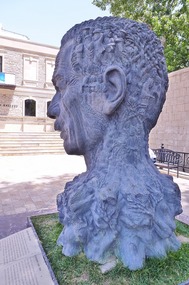
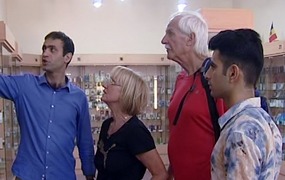
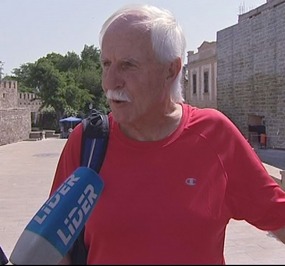
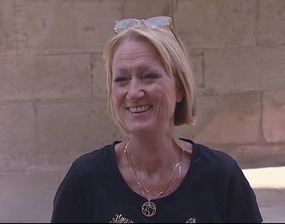
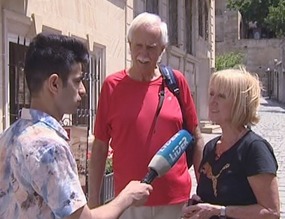
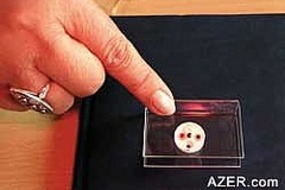
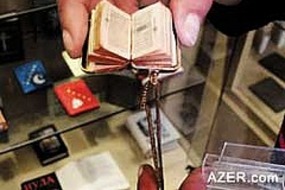
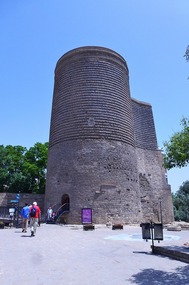
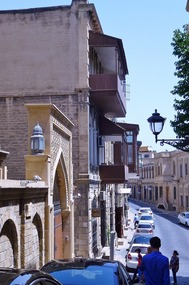
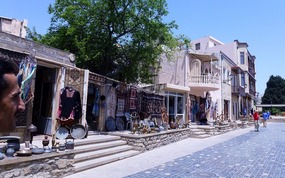
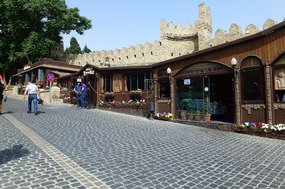
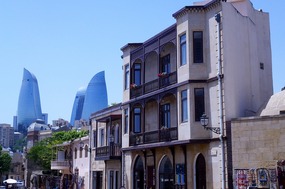
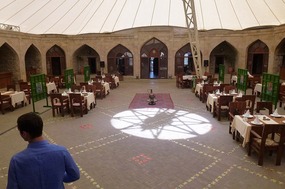
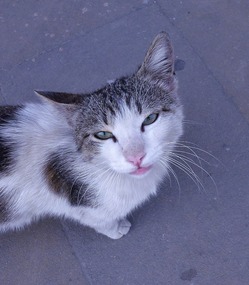
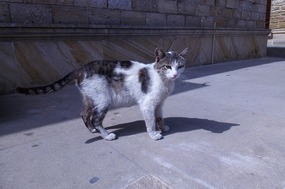
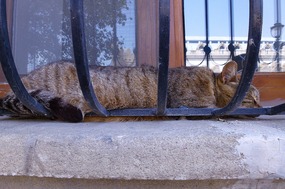
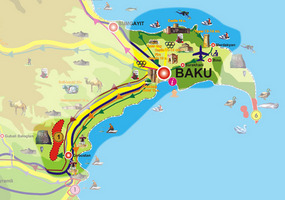

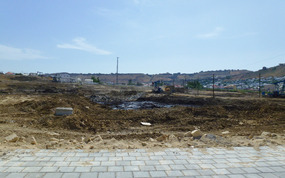
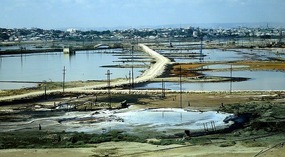
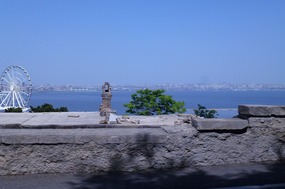
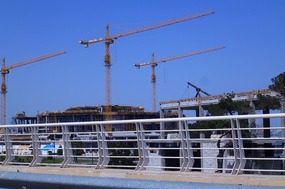
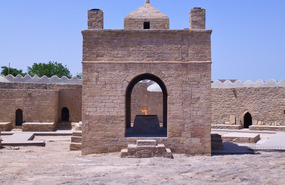
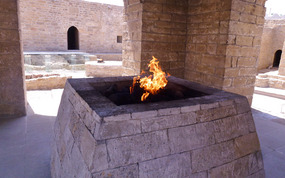
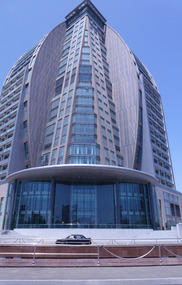
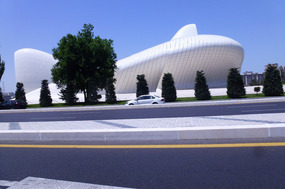
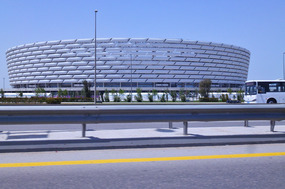
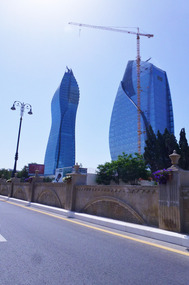
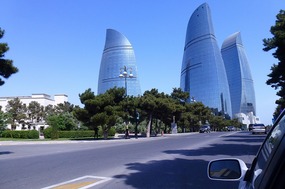
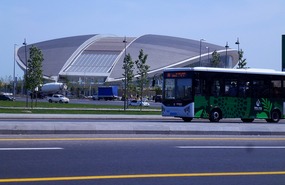
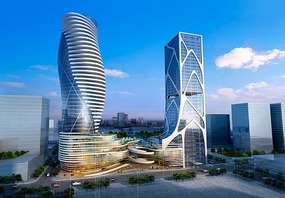

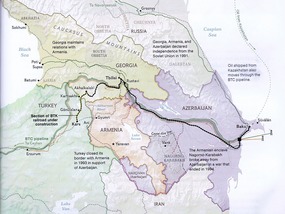
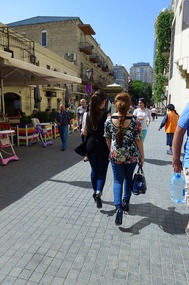
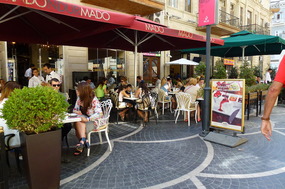
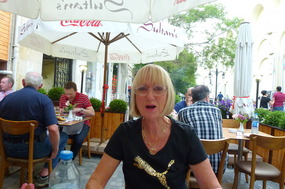
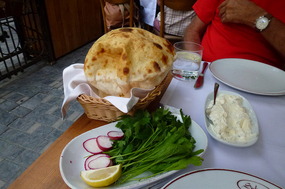
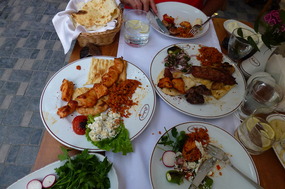
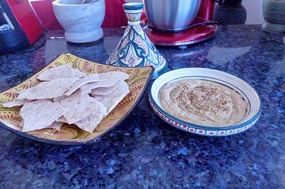





2025-05-22